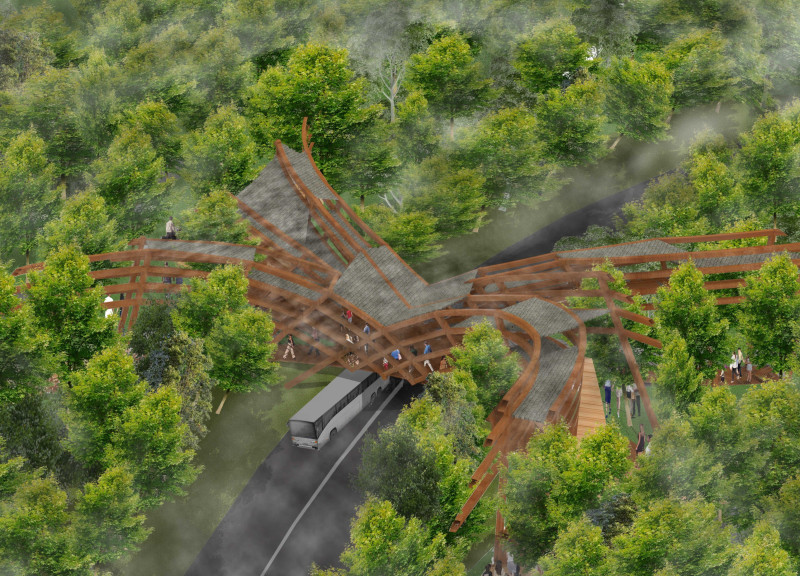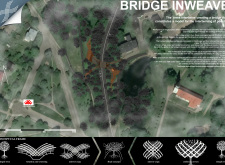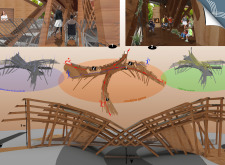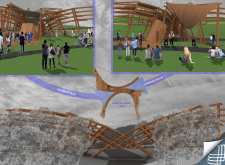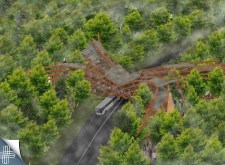5 key facts about this project
At its core, this project symbolizes the intertwined existence of nature and society, echoing the natural patterns found in trees. The architecture employs organic forms that mimic the branching of trees, representing growth, unity, and the nurturing of social ties within a community. The design concept articulates a fluid connection among various spaces, allowing paths and gathering zones to seamlessly merge as they weave through the environment. This results in a dynamic circulation system that invites exploration, encouraging visitors to experience different facets of the project and the natural landscape.
Functionally, "Bridge Inweave" caters to a diverse range of activities, serving as a communal hub for both recreational and cultural events. The architectural design is envisaged to host performances, art displays, and informal gatherings, promoting a sense of belonging and community engagement. By incorporating flexible spaces, the project is tailored to meet the evolving needs of the community, ensuring it remains relevant as social dynamics shift over time.
The material palette primarily consists of local wood, which serves not only as a structural element but also as a means of connecting the architecture more deeply with its natural context. This choice reflects an ethos of sustainability, resonating with environmentally conscious practices, while also providing warmth and a tactile quality to the spaces. Additionally, materials such as steel mesh, glass, and natural stone may be employed to enhance structural integrity, transparency, and durability. These materials work in concert to create a harmonious blend, ensuring the architecture reflects both sophistication and simplicity.
Several important design details contribute to the project's overall impact. The use of a multi-dimensional roof system, for instance, is designed to collect and manage rainwater while also providing essential shade and shelter to users. This element not only functions effectively within an ecological framework but also enhances the aesthetic quality of the structure as it plays with natural light and shadows throughout the day. Pathways that wind through the site encourage movement and exploration, leading users to various gathering spaces that cater to different community needs.
Unique design approaches are evident throughout "Bridge Inweave." The project exemplifies an architecture that prioritizes inclusivity and accessibility, accommodating individuals of varying abilities. This commitment to universal design ensures that all spaces are welcoming and functional for everyone. Moreover, the integration of natural elements within the site promotes a strong connection to nature, fostering well-being and encouraging outdoor engagement among community members.
In summary, "Bridge Inweave" stands as a thoughtful and carefully crafted architectural response to the challenges of contemporary living, balancing community needs with environmental stewardship. Its design encourages connectivity, social interaction, and a deeper appreciation of the natural world. For those interested in exploring the intricacies of this project further, reviewing the architectural plans, sections, and design details will provide valuable insights into the thoughtful processes that shaped this remarkable endeavor.


